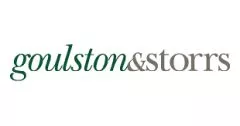The Private Target Mergers & Acquisitions Deal Points Study ("the Study") is published on a bi-annual basis by the Market Trends Subcommittee of the ABA Business Law Section's M&A Committee, which I am happy to serve on. The Study looks at several areas of negotiation, including financial terms, pervasive qualifiers, representations and warranties, covenants, closing conditions, indemnification provisions, and representations and warranties insurance. The wide range of topics covered is just one reason why the ABA report is so useful to practitioners and has become a widely respected source for what terms are currently considered market.
The benchmark for what is "market" shifts and adapts to the economic circumstances each year. This constant evolution makes it important to publish updates to the Study on a bi-annual basis and enables the Study to reflect trends by tracking the shifts over time.
The 2023 Study analyzed 108 publicly available acquisition agreements executed and closed in 2022 and the first quarter of 2023. What are the key trends of note, and which new data points have been added? See below for the most significant trends and changes identified by the Goulston & Storrs Corporate Group.
1. Purchase Price Adjustment Escrows. 53% of deals include a separate escrow account which holds back a portion of the total purchase price at closing in order to settle the post-closing purchase price adjustment. This is an increase from the 47% seen in the prior publication and the highest percentage reported since the Study began tracking this metric in 2006. Additionally, 40% of the acquisition agreements with adjustment escrows specify that the adjustment escrow is the sole source of recovery for the post-closing purchase price adjustment. This trend towards using the escrow as the sole recourse for purchase price adjustments has risen steadily from 11% in 2017 (when this metric was first tracked).
2. Representation and Warranty Insurance (RWI). There has been a market wide trend towards obtaining RWI over the past several years. The Study shows that 55% of the deals in the 2023 Study included references to RWI. This is up significantly from 29% when the Study first included this metric in the report in 2017. Additionally, of the acquisition agreements with references to RWI, the Study saw an increase in deals in which the RWI policy is the sole source of recovery for breaches of representations and warranties, at 49%. This is a growing trend, with this year's Study showing the highest prevalence of no indemnity delas recorded by the Study and jumping from 38% in the prior Study and up significantly from only 14% in 2018-19. In addition, 22% of deals included RWI as the sole source of recovery for breaches of non-fundamental representations and warranties.
3. Indemnity Caps. The 2023 Study includes additional data points to show RWI correlations in provisions that are materially affected by the presence of RWI. This is particularly evident in the indemnity provisions. It is common for parties to cap the potential liabilities of sellers for breaches of general representations and warranties. The central negotiation around this point is what amount is appropriate for the cap. There was a notable uptick in the size of the indemnity cap as a percentage of transaction value in 2023, presumably due to the private company M&A market being more "buyer friendly." As a result, the 2023 Study shows an increase in the mean for the indemnity cap as a percentage of transaction value from just over 6% in 2021 to almost 10.5% in 2023.
4. Materiality Scrapes. Since the 2005 publication, in which only 14% of the deals included a materiality scrape, the usage of the materiality scrape has significantly and regularly increased (with one notable exception in 2013), jumping to 70% of deals in 2015 and peaking at an impressive 93% in 2019. While the current Study shows a slight decrease in the prevalence of a materiality scrape, it is still present in 79% of the acquisition agreements included in the Study. In addition, the Study looks at the use of double materiality scrapes and the presence of RWI. The results show that double materiality scrapes are common in deals with RWI, but that a materiality scrape is more likely to be limited to the calculation of damages in deals without RWI then it would be if RWI is present.
5. Knowledge Qualifiers. In qualifying representations and warranties by the knowledge of the seller, buyers prefer a "constructive knowledge" formulation (i.e. the knowledge a person would reasonably be expected to obtain with due inquiry), while sellers prefer an "actual knowledge" standard. According to the Study, 92% of the deals in 2023 utilized a constructive knowledge formulation. The use of constructive knowledge rather than actual knowledge has increased regularly year over year and is now in almost all the deals, with some variation in how constructive knowledge is defined.
6. 10b-5 Representation. The 2023 Study shows a pronounced decline in the presence of 10b-5 and full disclosure representations in private M&A transactions. Inclusion of 10b-5 acquisition agreements has steadily decreased from a peak of 67% in the 2009 publication to a low of just 6% of the deals in the current Study. Additionally, a full disclosure representation is virtually never made as a stand-alone representation in the absence of a 10b-5 representation. Rather, if a full disclosure representation is made, it is only made in conjunction with a 10b-5 representation.
7. Silence on Sandbagging. A pro-sandbagging provision permits a buyer to recover indemnification for breaches the buyer was aware of prior to closing a transaction. In contrast, an anti-sandbagging provision expressly prohibits a buyer from recovering losses in connection with breaches the buyer knew of prior to closing. The compromise position between these two positions is to be silent on the issue (which is by default more in line with permitting sandbagging as a result of not expressly prohibiting recovery). The Study reports that 76% of deals followed the compromise position of remaining silent, up significantly from 41% in 2006. This also reflects an RWI correlation, with the deals that included RWI references making up a large portion of the 76% of deals that were silent on this point. Additionally, the Study shows that 19% of deals included pro-sandbagging provisions in 2023, down from 56% in 2005. Anti-sandbagging provisions continue to be uncommon, appearing in just 5% of the deals in 2023.
8. Damage Mitigation Provisions. A seller may include a provision in the indemnification section of the acquisition agreement requiring the buyer to make an effort to mitigate the damages in connection with an indemnifiable loss. The inclusion of such a damage mitigation provision, expressly requiring the buyer to take steps to mitigate losses, has increased significantly — from 22% in 2007 to 69% in 2023. This is a jump from the already relatively high percentage of 56% in 2021 and the highest percentage seen to date in the Study.
9. Types of Damages Recoverable. Sellers will often negotiate to expressly exclude certain types of damages from the damages sellers are indemnifying for in the acquisition agreement. Potential exclusions include incidental, punitive and consequential damages, among others. According to the Study, in 2023 (i) incidental damages were expressly excluded in 17% of the deals and the agreements were silent in 80% of deals, (ii) punitive damages were excluded in 73% of deals and the agreements were silent in 24% of deals, and (iii) consequential damages were expressly excluded in 39% of deals and the agreements were silent in 57% of deals. Of note, however, is that within the category of "expressly excluded" the Study includes provisions that have an exception from the exclusion for damages actually paid to a third party.
10. Indemnification as Exclusive Remedy. The Study shows that acquisition agreements commonly include a provision stating that the indemnification provisions are the exclusive remedy for claims in connection with the transaction, with such a provision included in 89% of the 2023 Study deals. Within the exclusive remedy provision, the Study looks at whether fraud is carved out and whether fraud is defined in any way. The Study shows that a fraud carve out is present in 87% of the agreements with this provision. In deals including a fraud carve-out, there has been a trend towards defining fraud with some specificity, often limiting the carve-out to actual or intentional fraud.
Each of these key takeaways and new data points from the latest
Study reflect trends in the markets that have developed over the
past several years due to demands and changes in the M&A
industry as a result of changing economies and priorities.
We'll explore the reasons and effects of these developments in
more depth through a series of short, focused articles to be
published over the next several weeks.
The content of this article is intended to provide a general guide to the subject matter. Specialist advice should be sought about your specific circumstances.


